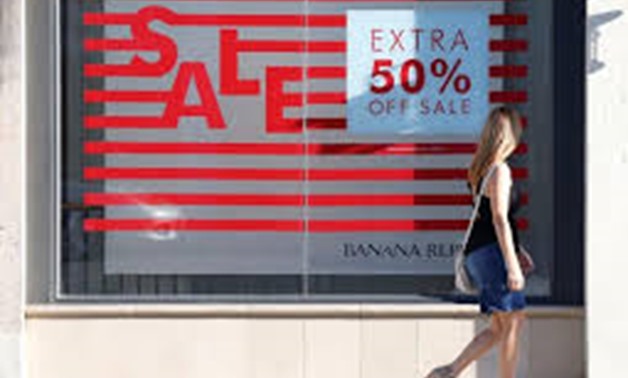
A woman walks past a sign advertising a sale in the Old Town shopping area of Pasadena, California, U.S. June 27, 2017.
WASHINGTON - 1 August 2017: U.S. consumer spending barely rose in June as personal income failed to increase for the first time in seven months amid a decline in dividend payments, pointing to a moderate pace of consumption growth in the third quarter.
The Commerce Department said on Tuesday that consumer spending, which accounts for more than two-thirds of U.S. economic activity, edged up 0.1 percent in June after an upwardly revised 0.2 percent gain in May.
There was also little sign of inflation. The personal consumption expenditures (PCE) price index, excluding food and energy, rose 0.1 percent in June after a similar gain in May. In the 12 months through June, the so-called core PCE price index increased 1.5 percent after advancing by the same margin in May.
The core PCE is the Federal Reserve's preferred inflation measure. The U.S. central bank has a 2 percent target.
The data was included in the second-quarter gross domestic product report published last week. That report showed consumer spending increasing at a 2.8 percent annualized rate, which accounted for the bulk of the economy's 2.6 percent growth pace during the quarter.
U.S. stock index futures pared gains slightly after the data while the dollar .DXY held gains. Prices of U.S. Treasuries were trading lower.
The increase in consumer spending in June was in line with economists' expectations. Consumer spending was previously reported to have gained 0.1 percent in May.
When adjusted for inflation, consumer spending was unchanged after rising 0.2 percent in May. June's flat reading likely sets consumer spending on a moderate growth path in the third quarter.
Since accelerating at a 3.8 percent pace in the second quarter of 2016, consumer spending growth has remained below a 3.0 percent rate, restrained by sluggish wage gains.
In June, personal income was unchanged. That was the weakest reading since a 0.1 percent dip in November 2016 and followed a 0.3 percent increase in May.
Wages and salaries increased 0.4 percent in June. Personal dividend income declined 3.0 percent in June after surging 4.8 percent in May. Income at the disposal of households after accounting for inflation fell 0.1 percent, the largest decrease since last December. Savings slipped to $546.4 billion in June from $564.7 billion in May.

Comments
Leave a Comment